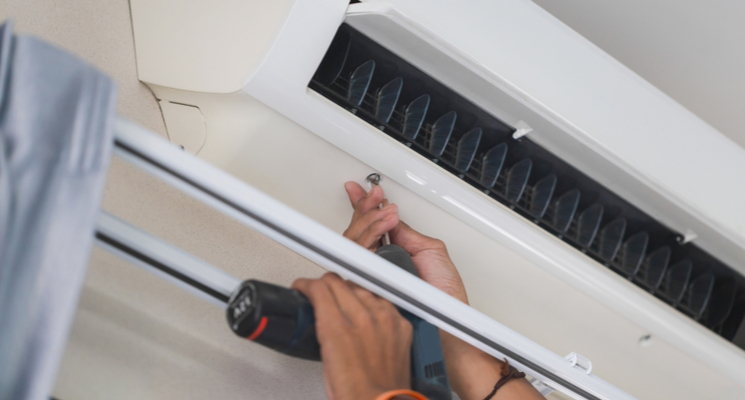The Value of HVAC Performance Measurement:
Beyond only controlling temperature, an HVAC system’s performance has broad effects. In commercial or industrial settings, it immediately affects operating costs and environmental effect, while in residential buildings, it dictates the comfort and health of the occupants. By monitoring HVAC performance, you can make sure the system is running at its best, using less energy and supporting sustainability objectives. In addition to raising utility costs, inefficient systems can cause uneven airflow, early device failure, and poor indoor air quality (IAQ).
Regulatory compliance is also another important reason for measuring HVAC performance. HVAC systems must adhere to energy norms and performance standards set by numerous nations. To make sure systems follow these rules, for instance, energy efficiency certifications like ENERGY STAR or standards like ASHRAE 90.1 are frequently employed.
Key Metrics for HVAC System Performance:
Assessing HVAC performance entails looking at particular metrics that offer quantifiable information about the system’s dependability, energy efficiency, and comfort level. The metrics listed below are frequently used:
· Energy Efficiency Ratio (EER):
EER calculates the effectiveness of an HVAC system in providing cooling under particular circumstances. The calculation involves dividing the power input in watts by the cooling output in BTUs. An energy-efficient system is indicated by a high EER rating, which makes it a crucial parameter for systems that operate in temperature-controlled environments. To maximise performance, systems with low EER ratings might need to be maintained, retrofitted, or replaced.
· Seasonal Energy Efficiency Ratio (SEER):
SEER assesses a system’s energy efficiency throughout a cooling season, accounting for fluctuating external temperatures, whereas EER gauges efficiency at a single operating point. Since SEER ratings offer a more accurate indicator of yearly energy use, they are especially crucial for areas with notable seasonal temperature variations. Better energy efficiency is reflected in a higher SEER rating, which frequently translates into cheaper utility bills.
· Heating Seasonal Performance Factor (HSPF):
The effectiveness of heat pumps in heating mode throughout a season is evaluated by HSPF. It calculates the ratio of the energy used (in watt-hours) to the overall heating output (in BTUs). Particularly in colder climates, heating systems with high HSPF ratings are more economical. The heat pump is guaranteed to continue being an effective source of heating energy throughout the year with regular HSPF measurements.
· Ventilation and Airflow:
An essential component of HVAC performance is enough ventilation. Airflow, which is measured in cubic feet per minute (CFM), makes sure that the heated or cooled air is distributed evenly throughout a building. Because the system must work harder to reach the desired temperature, inadequate airflow might result in inconsistent temperatures, a lower IAQ, and higher energy consumption. Another crucial factor is ventilation rates, which measure how much fresh air is brought into a room. The availability of clean and healthy air for residents is guaranteed by following ventilation guidelines, such as ASHRAE 62.1.
· Static Pressure and Energy Use:
The resistance that air encounters while passing through ducts and vents is measured by static pressure. Problems like clogged filters, undersized ductwork, or obstacles in the air distribution system are indicated by excessive static pressure. By identifying times of high energy use or indications of malfunctioning components, power consumption measurement offers insights into overall energy efficiency. For example, an abrupt rise in power usage can indicate compressor problems or airflow obstructions that require quick repair.
HVAC Performance Industry Standards:
International organisations have created standards and criteria for HVAC performance to create uniformity and guarantee effective functioning. These guidelines set forth requirements for the system’s design, energy use, and environmental adherence.
1. ASHRAE Guidelines:
One of the leading authorities on HVAC performance standards is the American Society of Heating, Refrigerating, and Air-Conditioning Engineers, or ASHRAE. Among the noteworthy standards are:
- ASHRAE 90.1:Stresses lower energy use and focuses on energy efficiency standards for HVAC systems in commercial buildings.
- ASHRAE 62.1: Provides ventilation and indoor air quality guidelines, guaranteeing sufficient air exchange to eliminate pollutants.
- ASHRAE 55: Establishes acceptable parameters for humidity and temperature inside buildings to ensure thermal comfort.
2. ISO Guidelines:
Internationally accepted HVAC performance standards are provided by the International Organisation for Standardisation (ISO). While ISO 5149 concentrates on safety and environmental considerations for refrigerants, ISO 16813 deals with the design of energy-efficient systems. These guidelines are especially significant for multinational projects where standardisation in HVAC performance is required.
3. Energy Star and AHRI Certifications:
For many HVAC parts, such as chillers and heat pumps, the Air-Conditioning, Heating, and Refrigeration Institute (AHRI) establishes performance certification requirements. Another important criterion is ENERGY STAR certification, which guarantees that systems fulfil strict energy efficiency requirements confirmed by rigorous testing.
Instruments and Methods for Evaluating Performance:
Accurate evaluations of HVAC performance necessitate certain instruments and methods. Common tools for assessing system performance include anemometers, flow hoods, and thermal imaging cameras. Building Automation Systems (BAS), which offer real-time data on temperature, humidity, energy use, and ventilation, are becoming more and more important.
Frequently Asked Questions:
1. Can Various Refrigerants Be Mixed In An Air Conditioning System?
Refrigerant mixing is not advised since it may result in system damage, decreased efficiency, and chemical incompatibility. Every refrigerant needs a different lubricant and runs at a different pressure. Always use the refrigerant that the manufacturer has recommended.
2. What Happens If An AC System Is Overcharged With Refrigerant?
Increased system pressure from overcharging can harm the compressor and other parts of the system. It might also raise energy expenses and decrease cooling effectiveness. For optimum functioning, the right amounts of refrigerant are essential.


